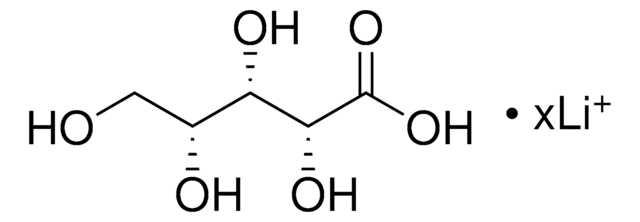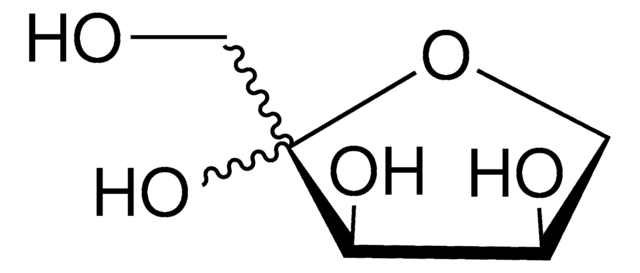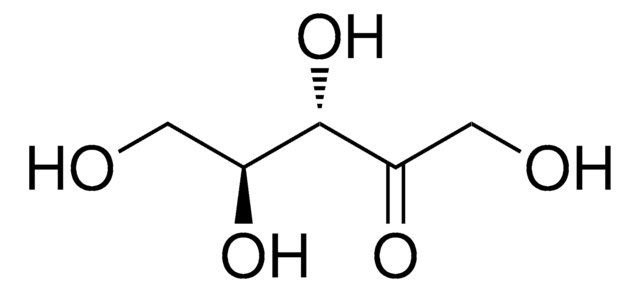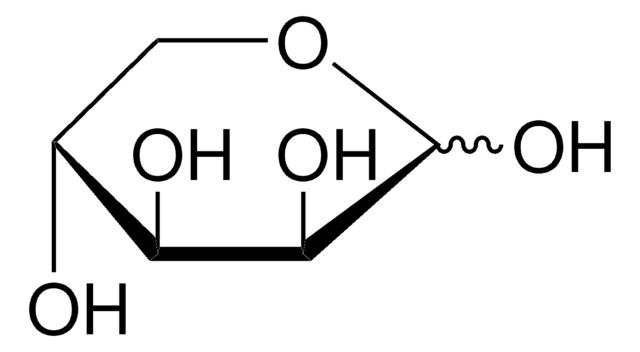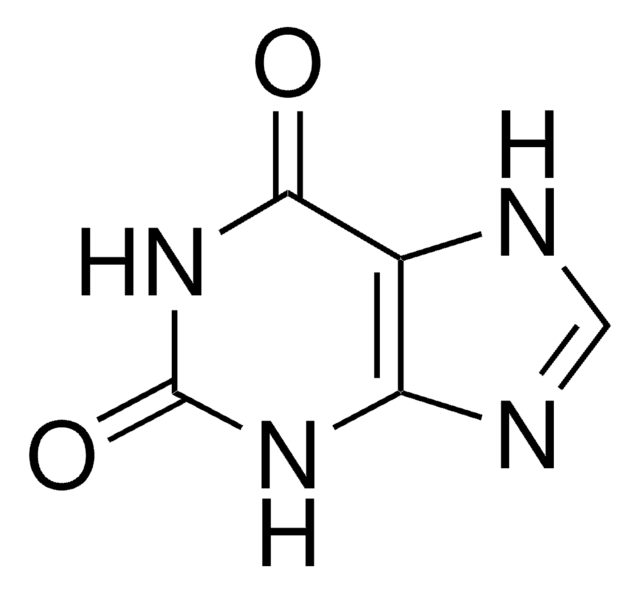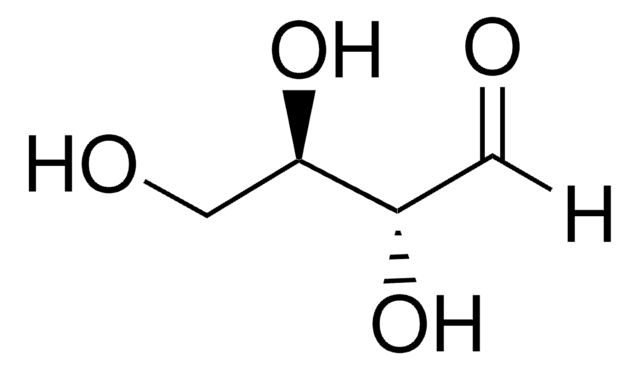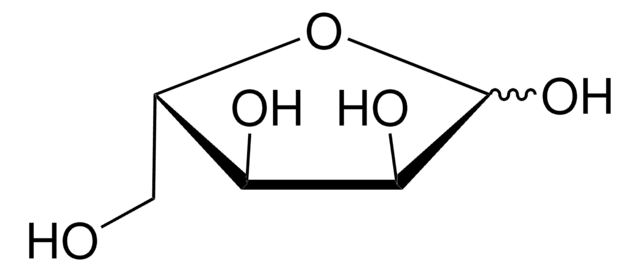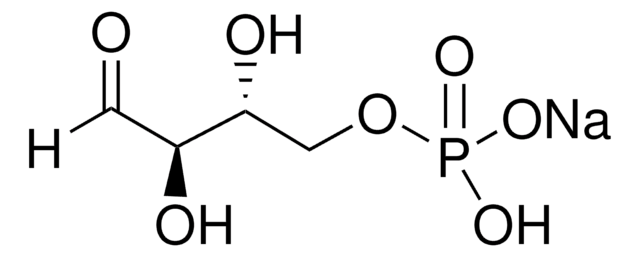X4625
D-Xylulose
≥95% (HPLC), syrup
Synonyme(s) :
D-threo-Pentulose
About This Item
Produits recommandés
Niveau de qualité
Essai
≥95% (HPLC)
Forme
syrup
Technique(s)
HPLC: suitable
Couleur
faintly yellow
Solubilité
water: 50 mg/mL, clear, faintly yellow to yellow
Température de stockage
−20°C
Chaîne SMILES
OCC1(O)OC[C@H](O)[C@H]1O
InChI
1S/C5H10O5/c6-2-5(9)4(8)3(7)1-10-5/h3-4,6-9H,1-2H2/t3-,4+,5?/m0/s1
Clé InChI
LQXVFWRQNMEDEE-PYHARJCCSA-N
Vous recherchez des produits similaires ? Visite Guide de comparaison des produits
Actions biochimiques/physiologiques
Autres remarques
Code de la classe de stockage
10 - Combustible liquids
Classe de danger pour l'eau (WGK)
WGK 3
Point d'éclair (°F)
Not applicable
Point d'éclair (°C)
Not applicable
Équipement de protection individuelle
Eyeshields, Gloves
Faites votre choix parmi les versions les plus récentes :
Déjà en possession de ce produit ?
Retrouvez la documentation relative aux produits que vous avez récemment achetés dans la Bibliothèque de documents.
Les clients ont également consulté
Notre équipe de scientifiques dispose d'une expérience dans tous les secteurs de la recherche, notamment en sciences de la vie, science des matériaux, synthèse chimique, chromatographie, analyse et dans de nombreux autres domaines..
Contacter notre Service technique